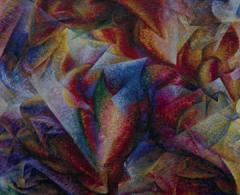
This Article From Issue
July-August 2006
Volume 94, Number 4
Page 294
DOI: 10.1511/2006.60.294
To the Editors:
I enjoyed Brian Hayes's column "Gauss' Day of Reckoning" (Computing Science, May-June), but I was surprised that he didn't consider the very reasonable possibility that the instructor not only knew the answer but was, in fact, trying to teach the mathematics of series computation. The task might not have been to compute a series summing problem, but rather to find an efficient algorithm to do the computation.
This may be a teacher's embellishment, just as the schoolboys might embellish the story by having Gauss outsmart his teacher. But the original version has support for this interpretation since the eulogy clearly states that the class was busy performing multiplications and additions. My bet is that every one of those schoolboys could find some algorithm more efficient than serial addition, but Gauss was proud of being able to find a very efficient algorithm very quickly.
The seeds of Gauss's genius may have been there, but this hard taskmaster may have helped them grow with the kind of mathematical thinking he taught. Gauss may have been justifiably proud of being the brightest student of such a teacher, rather than someone boasting that he outsmarted his teacher.
Robert F. Rakowski
Ohio University
Athens, OH
To the Editors:
Concerning Gauss's quick summation of a series of numbers as a schoolboy, a likelier explanation occurs to me. If Gauss was as curious as he was good with numbers, he had probably worked out this problem ahead of time just from playing around on his own. Many of us did this sort of thing in the days before calculators (let alone computers), as such activity provided us with enrichment and enjoyment that was unavailable to us in the classroom.
John D. Leggett
Canterbury, NH
To the Editors:
Brian Hayes's well-researched essay brings back fond memories. While Mr. Hayes surmised that only those with a computer or a programmable calculator would add successively from 1 through 100, I, together with thousands if not millions of other Chinese students in the 1930s, had done just that with a non-programmable calculator—the abacus.
After my mother introduced me to the use of the abacus, she instructed me to get the sum of 1 through 100. I would drill until I got 5,050 every time, probably at a rate of about one minute per iteration—not a long enough respite for Gauss's teacher.
Marshall Chao
Midland, MI

American Scientist Comments and Discussion
To discuss our articles or comment on them, please share them and tag American Scientist on social media platforms. Here are links to our profiles on Twitter, Facebook, and LinkedIn.
If we re-share your post, we will moderate comments/discussion following our comments policy.